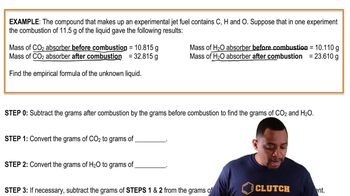Combustion Apparatus definitions Flashcards
 Back
BackCombustion Apparatus definitions
1/14
Terms in this set (14)
- Combustion AnalysisAn analytical method to determine a compound's empirical formula by analyzing combustion products.
- Combustion ApparatusA device with multiple chambers used to vaporize samples and facilitate combustion analysis.
- Chamber AThe initial chamber where the sample is vaporized and oxygen gas is introduced.
- Chamber BThe chamber where hydrogen in the sample is converted into water.
- Chamber CThe chamber where water is trapped and nonmetals form gases.
- Oxygen GasA reactant essential for combustion, introduced in the combustion apparatus.
- Empirical FormulaA formula representing the simplest whole-number ratio of elements in a compound.
- VaporizationThe process of converting a sample into a gaseous state within the apparatus.
- NonmetalsElements in the sample that form gases like CO2, NO2, or SO2 during combustion.
- Excess OxygenRemaining oxygen post-reaction, common in oxygen-rich environments.
- CO2A gas formed when carbon in the sample undergoes combustion.
- NO2A gas formed when nitrogen in the sample undergoes combustion.
- SO2A gas formed when sulfur in the sample undergoes combustion.
- Diatomic MoleculeA molecule consisting of two atoms, formed by halogens during combustion.


